by Eddie Powell | Apr 1, 2014

Soil Sampling may save you time and money!
As spring approaches, many Florida homeowners are gearing up to grow their own vegetables. The most frequently asked question this time of year is, “why do I need to fertilize my soil?” The answer is simple – – not all nutrients are present in the right amounts to support good plant health.
North Florida is a prime example of an area lacking certain nutrients, since the soils in this area are generally infertile and acidic. Especially with all the rain from this past year! Therefore, soils must be tested and appropriate amounts of lime and fertilizer must be applied to the soil for adequate plant growth. If this is not done then the crops will suffer from inadequate plant growth and yield will suffer.
Most vegetable crops grow and perform best at a pH range, 6.0-7.0. A soil sample must be taken to determine soil pH. Feel free to bring one of those samples by your local University of Florida IFAS Extension office for your soils pH results. If the pH extends far below or above this range, then crop productivity will be significantly reduced. This happens because the crop cannot utilize the fertilizer properly. In other words, this causes the plant to use too much of some nutrients (like manganese, zinc, and iron) that are required in very small amounts and too little of some nutrients (like nitrogen, phosphorus, and potassium) that are required in larger amounts. The plant system becomes upset so to speak and does not function well and some plants may even die.
To avoid having your crop suffer because of a lack of fertilizer, contact your local University of Florida IFAS Extension Agent and ask he/she to help you select the best kind of fertilizer for your crop. After you have selected the correct fertilizer, make sure to ask your agent to assist you with the following:
- Be aware of the correct amount to be applied to the area where you plan to grow your vegetable crops
- Understand how to apply the fertilizer to the soil so that your plants will use it properly for an excellent crop yield.
Points to remember:
- For vegetables, keep your soil pH range between 6.0 -7.0 so that your crop can uptake the fertilizer properly
- Make sure to apply the correct amounts of fertilizer to the soil so that your plants will not suffer but produce high quality produce.
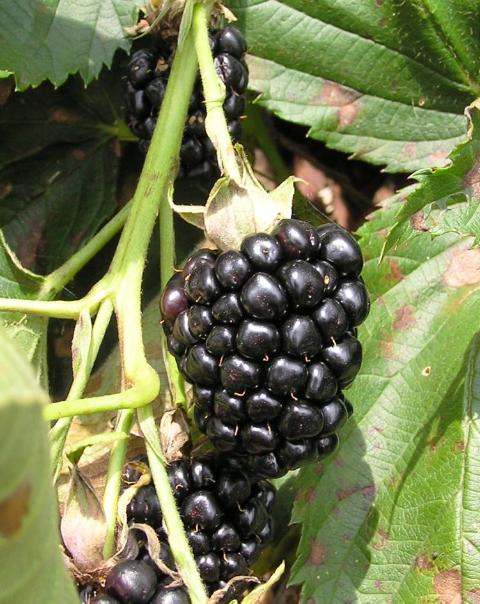
by Eddie Powell | Feb 25, 2014
As you begin plans for your garden this spring think about creating an edible landscape. Edible landscaping is becoming more popular now that vegetable prices are increasing.
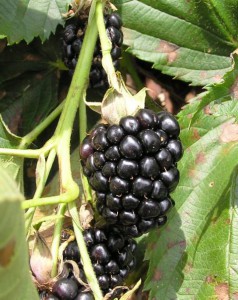
Edible landscapes are attractive to the eye, as well as enticing to the palate. What more could a home gardener ask for than to be walking through the landscape eating vegetables and fruits produced from their very own effort? The additional color edible landscapes offer is a bonus.
Locating the edible landscape in the right spot is important. Make sure it is planted in an area that will be easily accessible and visible. It is fun and rewarding to watch vegetables grow and work in the garden.
One of the numerous benefits of edible landscape gardening includes obtaining freshly picked produce on a regular basis. Such freshness offers higher nutritional value and enhanced flavor, since produce is at its highest peak right after harvest. This is a benefit because most vegetables sold through large supermarkets have been stored and transported for days or weeks, depending on the product.
Food costs have been on the rise due to rising fuel and fertilizer prices, increasing regulations and competition from imported produce. By creating an edible landscape, the home gardener can reduce their food costs. As a bonus, fresh food will be right outside!
Read more on this topic by visiting the UF IFAS edible landscaping page
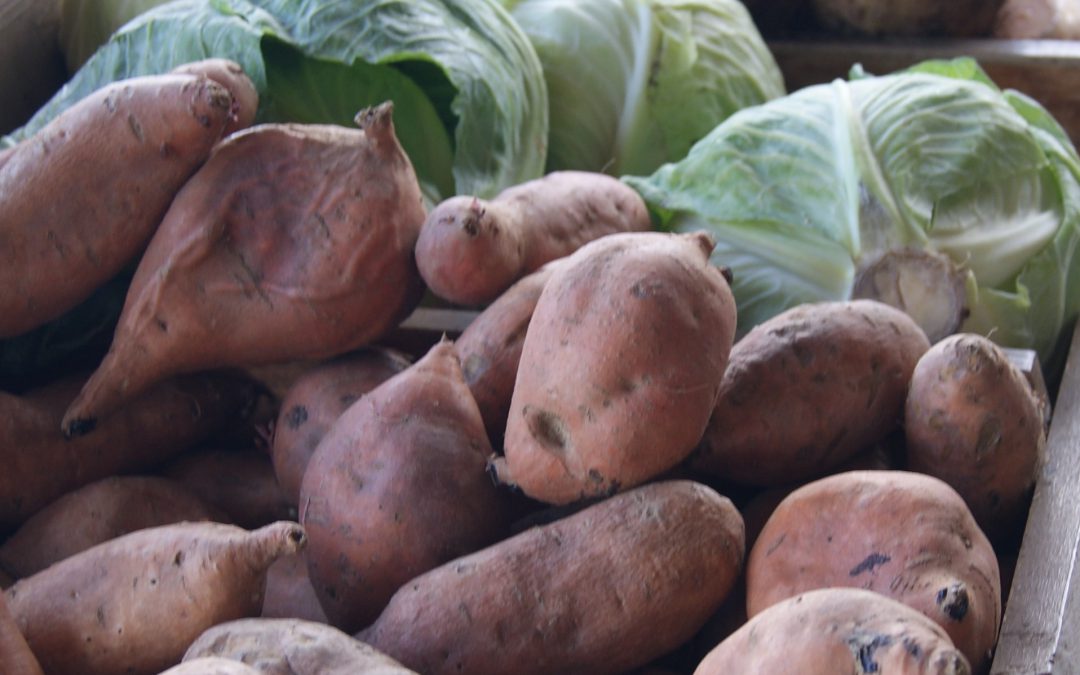
by Eddie Powell | Jan 27, 2014
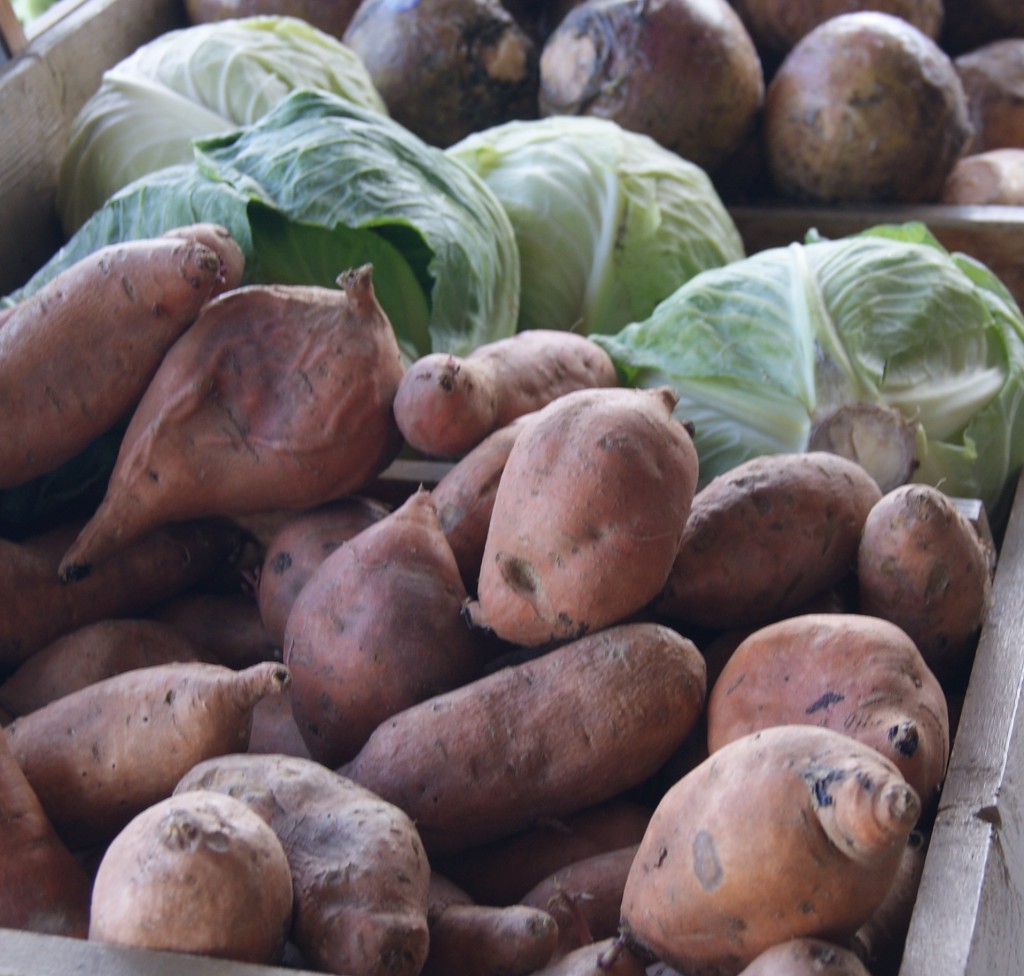
A bountiful harvest
Every winter, many Florida homeowners enjoy growing their own vegetable plants. It is definitely cheaper to buy vegetable seeds than vegetable transplants, and some vegetables grow better when direct seeded.
One factor to take into consideration when planning a vegetable garden is that each vegetable has a different germination response to temperature. Some seeds germinate best under low soil temperature while other respond best under high soil temperatures.
When planting vegetable seeds, remember that cool season crops, such as cabbage, turnips, and cauliflower, will perform best under cooler soil conditions.
The key to getting the highest seed germination rate is to match the correct soil temperature to the vegetable seed of choice.
Below is a listing of correct soil temperatures needed for vegetable seed germination.
MINIMUM Soil Temperature for Germination in Degrees Fahrenheit
- 32- Endive, Lettuce, Onion, Parsnip, and Spinach
- 40 -Beet, Broccoli, Cabbage, Carrot, Cauliflower, Parley, Pea, Radish, Swiss Chard, and Celery
- 50-Asparagus, Sweet Corn, Tomato, and Turnip
- 60-Lima bean, Snap Bean, Cucumber, Okra, and Pepper
- 65-Eggplant, Muskmelon, Pumpkin, Squash, and Watermelon
OPTIMUM Soil Temperature for Germination in Degrees Fahrenheit
- 70-Celery, Parsnip, and Spinach
- 75-Asparagus, Endive, Lettuce, and Pea
- 80-Lima Bean, Carrot, Cauliflower, Onion, Radish, Tomato, Turnip
- 85-Snap Bean, Beet, Broccoli, Cabbage, Eggplant, Parsley, Pepper, Sweet Corn, and Swiss Chard
- 95-Cucumber, Muskmelon, Okra, Pumpkin, Squash, and Watermelon.
MAXIMUM Soil Temperature for Germination in Degrees Fahrenheit
- 75 -Celery, Endive, Lettuce, and Spinach
- 85-Lima Beans, Parsnip, and Pea
- 95-Asparagus, Snap Bean, Beet, Broccoli, Cabbage, Carrot, Cauliflower, Eggplant, Onion, Parsley, Pepper, Radish, Swiss Chard, and Tomato
- 106-Cucumber, Muskmelon, Okra, Pumpkin, Squash, Sweet Corn, Turnip, and Watermelon
by Eddie Powell | Nov 18, 2013
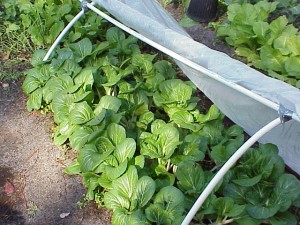
Image Credit : Eddie Powell
Northwest Florida homeowners enjoy growing their own vegetables every fall, but are faced with cold weather issues, especially during the first few days of December. For example, most cole crops can be planted until November, but they must be protected from the cold weather or they will need to be replaced. A good variety of cold tolerant plants should be used in order to prevent total devastation of the garden by extremely cold weather.
Below are a few tips to assist the home gardener in growing a successful winter vegetable crop.
- For tender plants, site selection should the top priority when preparing for a freeze. Vegetable plants need a site with good air drainage; not in a low area where cold air settles. Arranging tender plants along a barrier to protect them from cold winds improves the plants cold protection, especially from very hard freezes.
- Poorly drained soils result in weak and shallow roots which are more susceptible to cold injury.
- Plants grown with the correctly applied rate of nutrients will tolerate colder temperatures better and recover from cold injury faster than plants grown with little to no nutrients.
- Watering vegetable garden plants before a freeze can help protect plants. A well watered soil will absorb more solar radiation than dry soil and will radiate heat during the night. This may increase cold tolerance by as much as 2°F.
- Saturated soil conditions can damage the root systems of most plants over a few days, so make sure the ground is well-drained.
- Healthy vegetable plants are more resistant to cold than vegetable plants weakened by disease, insect damage, or nematode damage. Routine inspection for pests and implementation of necessary control measures are essential.
- Plastic or cloth coverings can help protect vegetable plants more from frost than from extreme cold. Covers that extend to the ground and are not in contact with the vegetable plants foliage will reduce cold injury. If the vegetable plant foliage is in contact with the cover it is often cold burned or injured because of heat transfer from the foliage to the colder cover. Some examples of excellent plant covers are cloth sheets, quilts or black plastic. If plastic covering is used, it is extremely important to remove the covering during the day to provide for ventilation of trapped heat.
- Feel free to contact your local county extension office for information on cold protection, pest identification and recommended control measures.
by Eddie Powell | Oct 21, 2013
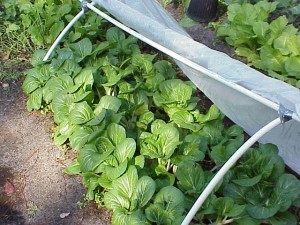
Image Credit: Eddie Powell
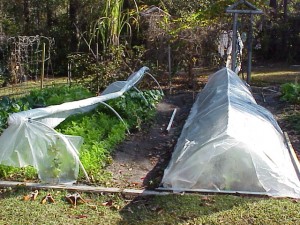
Image Credit: Eddie Powell
Every fall gardening season, Florida homeowners enjoy growing their own vegetables but are faced with cold weather issues. As early as November 1, a chance of frost is possible in Northwest Florida.
Most Cole Crops can be planted until November, but they must be protected from the cold weather or they will need to be replaced. A good variety of hardy plants should be planted in order to prevent total devastation of the garden by extremely cold weather. If tender plants are used, the following considerations must be observed.
Site selection for tender plants is the number one factor to be considered when preparing for a freeze. Vegetable plants need a site with good air drainage, and somewhat high in elevation relative to the area; not in a low area where cold air settles. Arranging tender plants along a barrier to protect them from cold winds improves the plants cold protection, especially from very hard freezes. Another factor to consider is that poorly drained soils result in weak shallow roots which are more susceptible to cold injury.
Plants grown with the correctly applied rate of nutrients will tolerate colder temperatures better and recover from cold injury faster than plants grown with little to no nutrients. Watering vegetable garden plants before a freeze can help protect plants. A well-watered soil will absorb more solar radiation than dry soil and will re-radiate heat during the night. This can improve hardiness by as much as 2°F. However, saturated soil conditions can damage the root systems of most plants over a few days, so make sure the ground is well-drained.
Healthy vegetable plants are more resistant to cold than vegetable plants weakened by disease, insect damage, or nematode damage. Routine inspection for pests and implementation of necessary control measures are essential. Feel free to contact your local county extension office for information on pest identification and recommended controls.
Plastic or cloth coverings can help protect vegetable plants more from frost than from extreme cold. Covers that extend to the ground and are not in contact with the vegetable plants’ foliage may reduce cold injury to the plant. If the vegetable plant foliage is in contact with the cover it is often cold burned or injured because of heat transfer from the foliage to the colder cover. Some examples of excellent plant covers are cloth sheets, quilts, commercial row cover such as “remay”, or black plastic. If plastic covering is used, it is extremely important to remove the covering during the day to provide ventilation of trapped heat. Failure to do so will result in certain death to the vegetables. To learn more on cold protection of vegetable plants please visit this EDIS article on frost protection.








